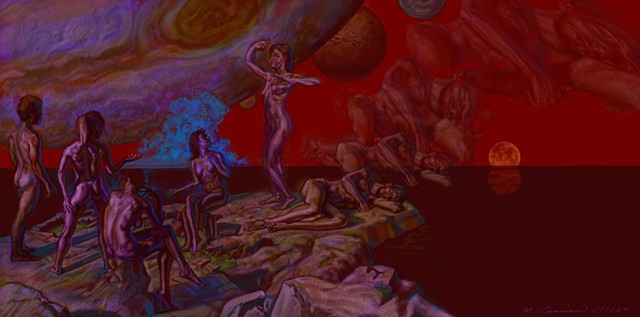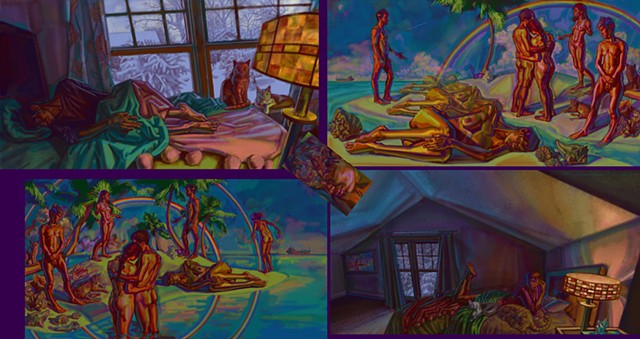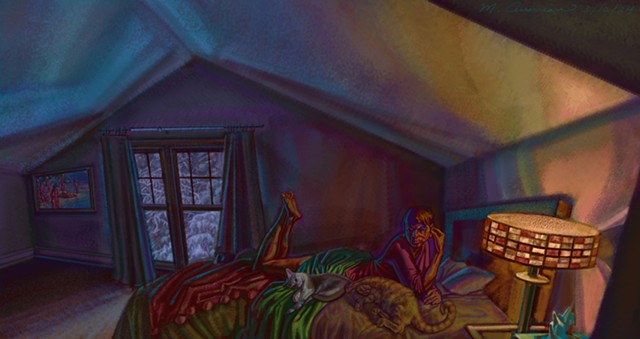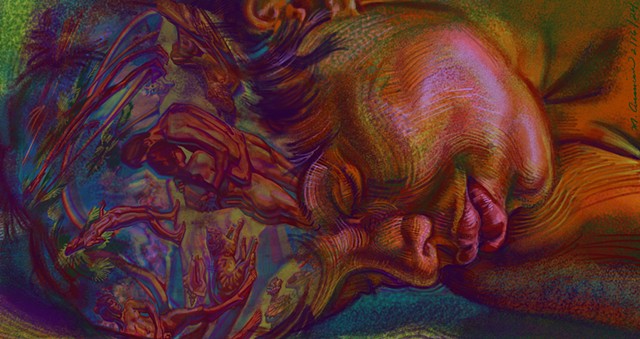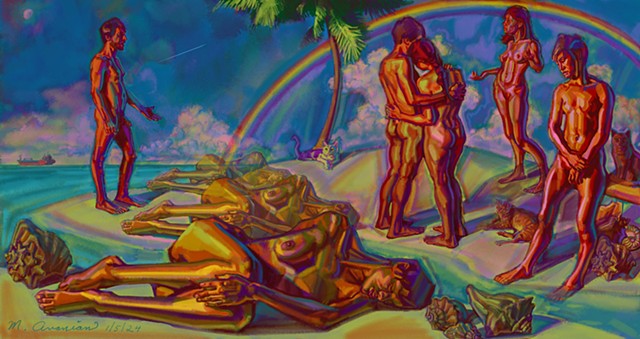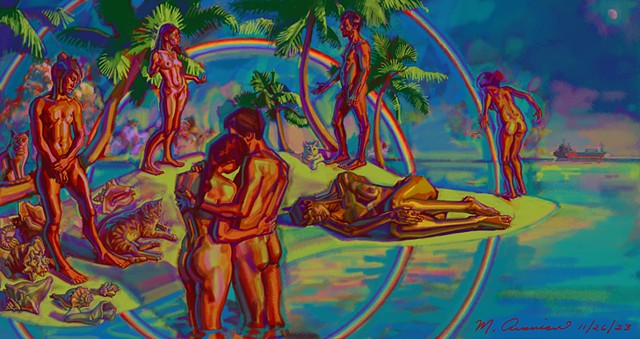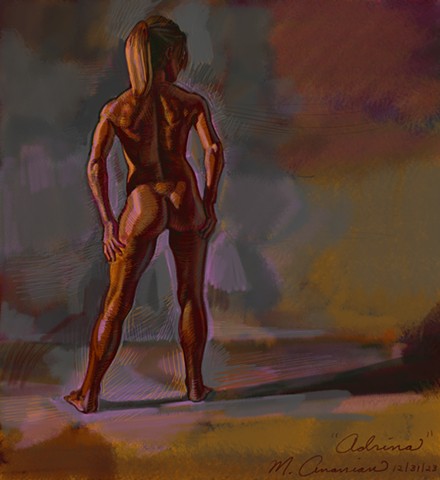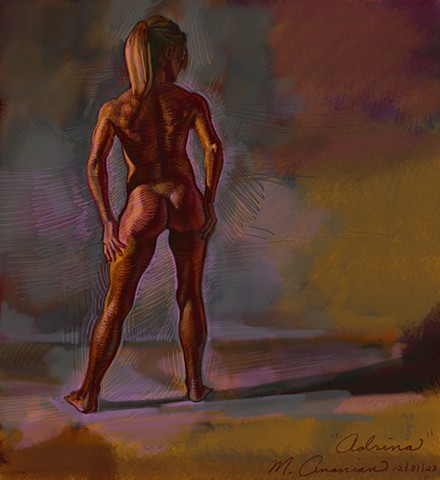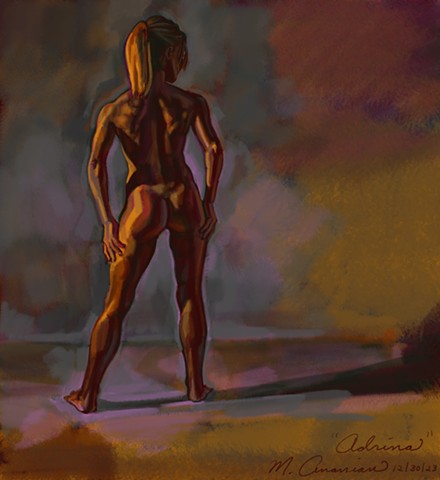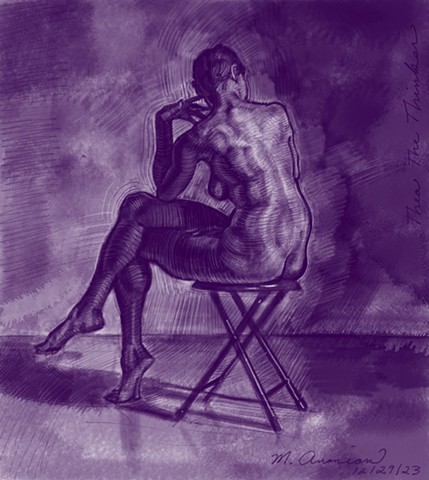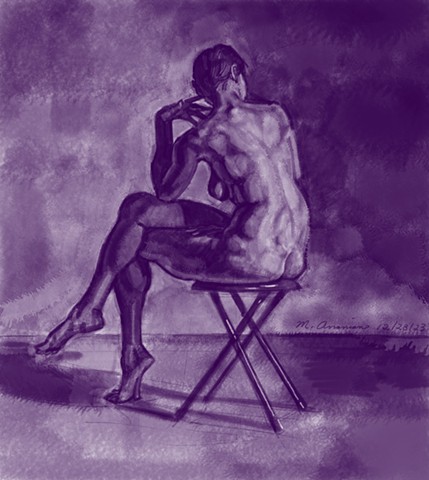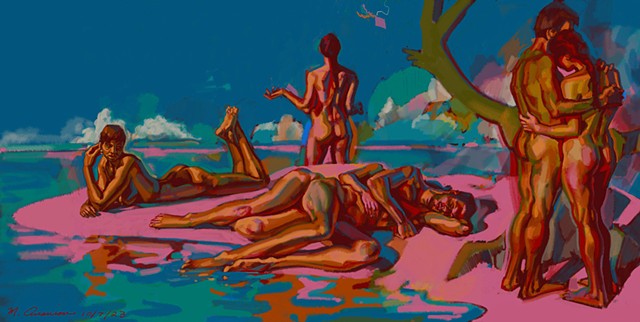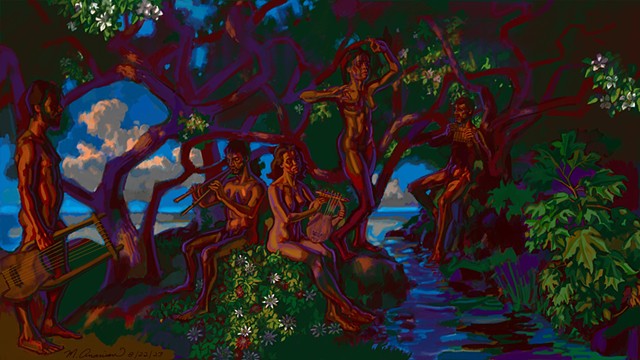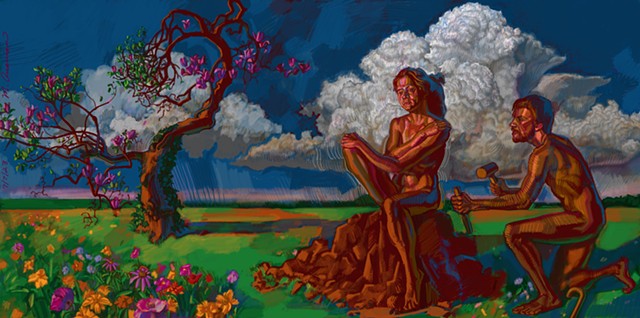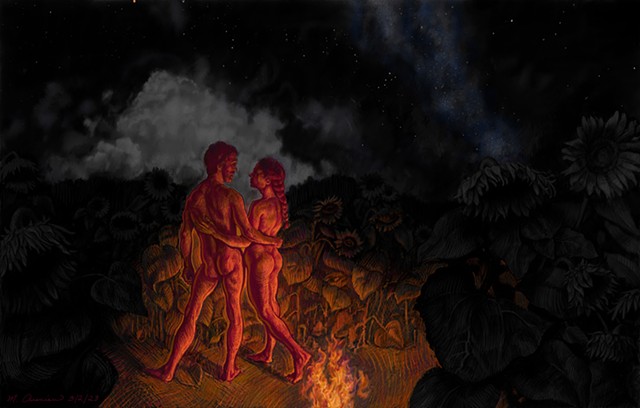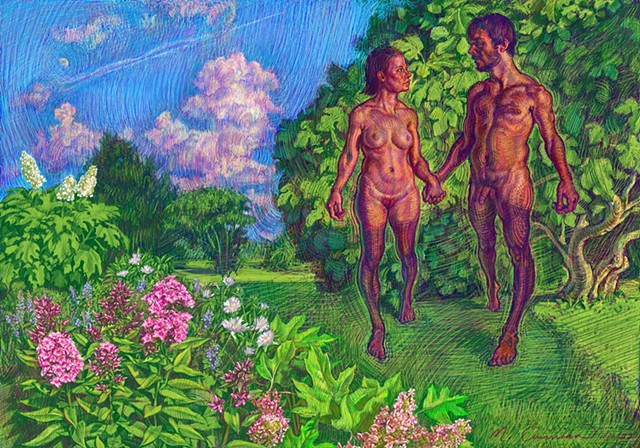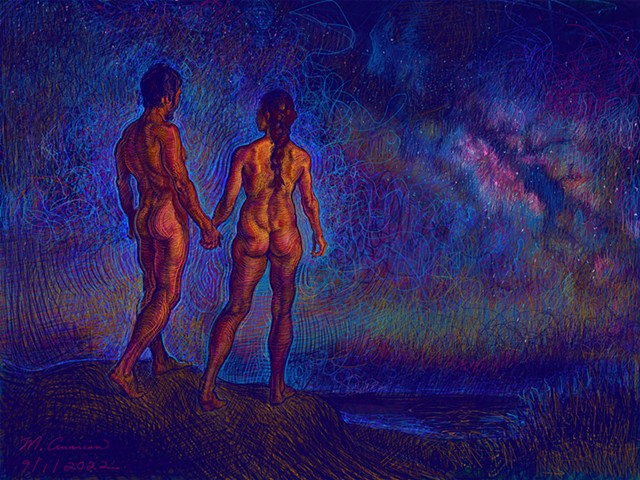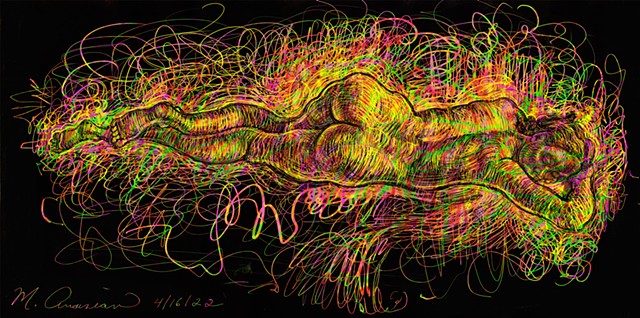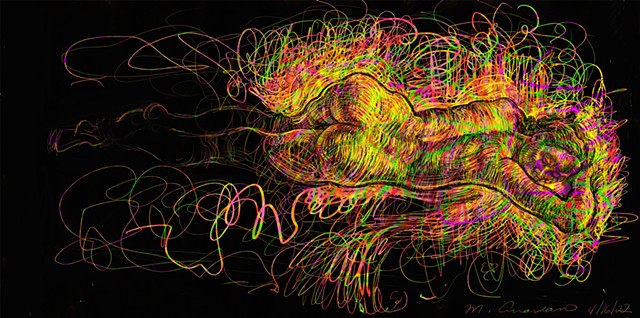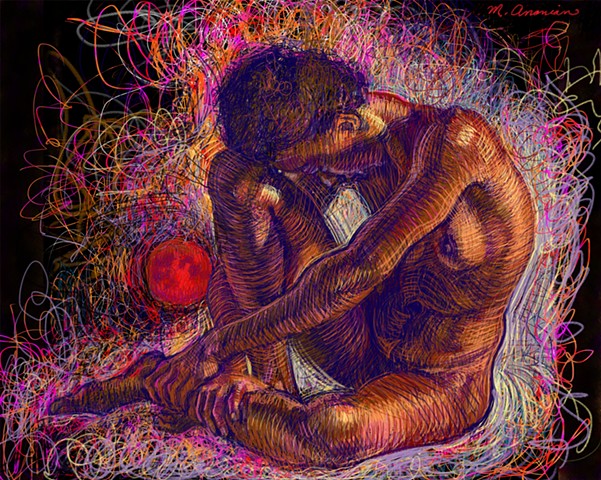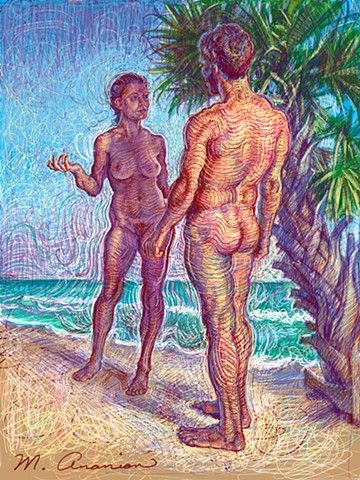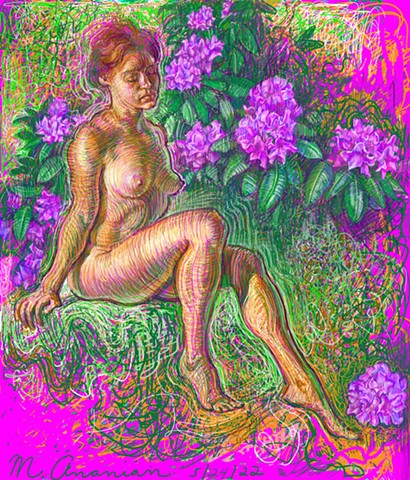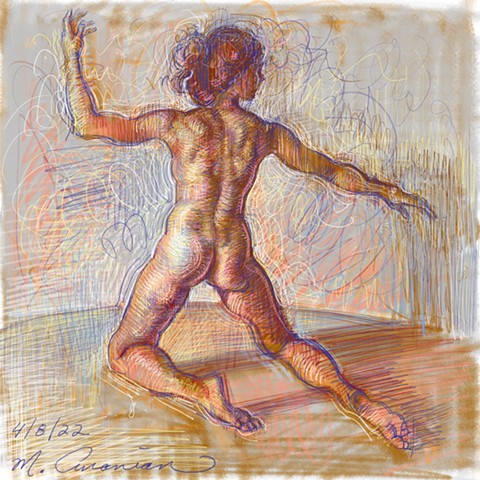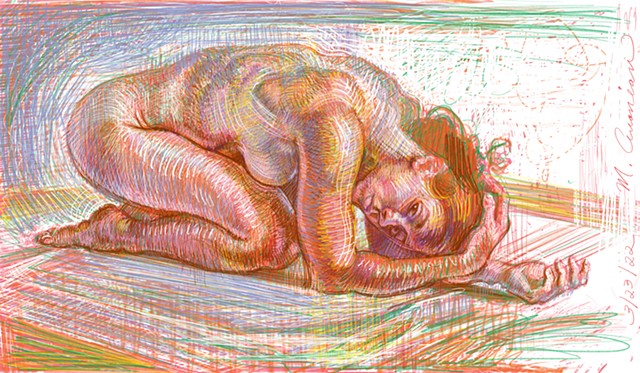Digital Paintings
Digital painting is one of the few positive outcomes of the Pandemic. For three years, I taught online due to this global scourge. While developing my computer drawing and painting skills to be a better online teacher, I realized its potential for making fine art--and how much fun I was having making it! So, in Winter 2022 I expanded my media and repertoire to include digital painting into my personal art practice. I've been in its thrall ever since!
My digital artwork has elements of painting and drawing in it because before 2022, my principal media were oil paint and charcoal. For my digital art, I use broad tones and planar swatches of color with a minimum of line, but when I began, I used mostly line and very little tone. My lines varied in color, size, length, thickness, speed, etc. I relied on the combination of three linear systems: 1) Scribbled Lines to build density of mass, akin to a wire armature with clay lumped onto it; 2) Cross Contour Lines to define and enhance a form's volume, which are parallel lines that travel across the terrain of a form; 3) Outlines to define the silhouettes or exterior edges of forms.
I started using more tone in Spring 2023: broad passages and planar swatches of color. I have relied mostly on optical mixes of color, changing their opacities to create semi-transparent layers that amplify a color's resonance, that is, its deepness, fullness, and richness. So, when I want to create, for example, a less saturated or shadowy/dark variant of a lighter color, I don't darken it with a gray or brown color, nor do I add black or a black and white mixture; instead, I will use semi-transparent color complements or what I call near complements, such as purple and orange.
At the start of 2024, I started combining both line and tone to maximize these volumetric and coloristic effects.






